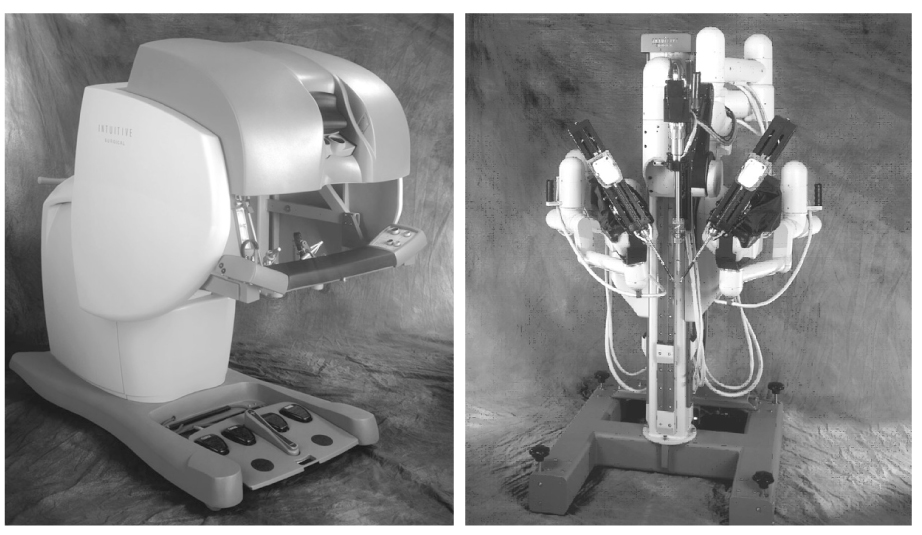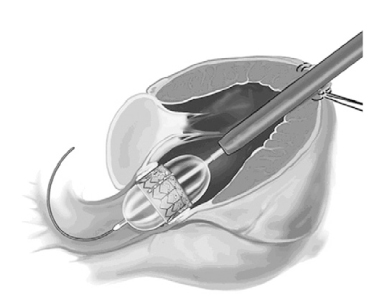J Korean Med Assoc.
2008 Apr;51(4):335-346. 10.5124/jkma.2008.51.4.335.
Minimally Invasive Cardiac Surgery
- Affiliations
-
- 1Department of Cardiovascular Surgery, University of Ulsan College of Medicine, Korea. jwlee@amc.seoul.kr
- KMID: 2185742
- DOI: http://doi.org/10.5124/jkma.2008.51.4.335
Abstract
- Traditional cardiac surgery has been performed via a "big" median sternotomy incision by significant complexity and invasiveness. The traditional big incision has presented with many problem, and at the same time, has given opportunity to make the procedures less invasive. During the past decade, improvement in endoscopic equipments and operative techniques has resulted in development of minimal invasive cardiac operations using small incisions with or without robotics. A number of cardiac procedures are currently performed by minimal invasive approaches and for many surgeons a minimal invasive cardiac surgery has become a standard practice. Herein, we reviewed the minimal invasive cardiac surgery in the aortic valve, mitral valve, tricuspid valve, atrial septal defect, and coronary artery disease.
Keyword
MeSH Terms
Figure
Cited by 1 articles
-
Establishment of a Maximum Surgical Blood Order Schedule and Red Blood Cell Mean Transfusion Units Per Patient According to Adjacent Diagnosis Related Groups Patient Classification System
Su Jin Yoon, Kyunghoon Lee, Min-Jung Kwon, Hyosoon Park, Hee-Yeon Woo
Lab Med Online. 2020;10(3):235-241. doi: 10.3343/lmo.2020.10.3.235.
Reference
-
1. Cosgrove DM, Sabik JF. Minimally invasive approach for aortic valve operations. Ann Thorac Surg. 1996. 62:596–597.
Article2. Cohn LH, Adams DH, Couper GS, Bichell DP, Rosborough DM, Sears SP, Aranki SF. Minimally invasive cardiac valve surgery improves patient satisfaction while reducing costs of valve replacement and repair. Ann Surg. 1997. 226:421–426.3. Navia JL, Cosgrove DM. Minimally invasive mitral valve operations. Ann Thorac Surg. 1996. 62:1542–1544.
Article4. Argenziano M, Oz MC, Kohmoto T, Morgan J, Dimitui J, Mongero L, Beck J, Smith CR. Totally endoscopic atrial septal defect repair with robotic assistance. Circulation. 2003. 108:S1. II191–II194.
Article5. Bonatti J, Schachner T, Bernecker O, Chevtchik O, Bonaros N, Ott H, Friedrich G, Weidinger F, Laufer G. Robotic totally endoscopic coronary artery bypass: program development and learning curve issues. J Thorac Cardiovasc Surg. 2004. 127:504–510.
Article6. Wimmer-Greinecker G, Dogan S, Aybek T, Khan MF, Mierdl S, Byhahn C, Moritz A. Totally endoscopic atrial septal repair in adults with computer-enhanced telemanipulation. J Thorac Cardiovasc Surg. 2003. 126:465–468.
Article7. Cho SW, Chung CH, Kim KS, Choo SJ, Song H, Song MG, Lee JW. Initial experience of robotic cardiac surgery. Korean J Thorac Cardiovasc Surg. 2005. 38:366–370.8. Grossi EA, Galloway AC, LaPietra A, Ribakove GH, Ursomanno P, Delianides J, Culliford AT, Bizekis C, Esposito RA, Baumann FG, Kanchuger MS, Colvin SB. Minimally invasive mitral valve surgery: a 6-year experience with 714 patients. Ann Thorac Surg. 2002. 74:660–664.
Article9. Casselman FP, Van Slycke S, Dom H, Lambrechts DL, Vermeulen Y, Vanermen H. Endoscopic mitral valve repair: feasible, reproducible, and durable. J Thorac Cardiovasc Surg. 2003. 125:273–282.
Article10. Dogan S, Aybek T, Risteski PS, Detho F, Rapp A, Wimmer-Greinecker G. Minimally invasive port access versus conventional mitral valve surgery: prospective randomized study. Ann Thorac Surg. 2005. 79:492–498.
Article11. Kim BS, Soltesz EG, Cohn LH. Minimally invasive approaches to aortic valve surgery: brigham experience. Semin Thorac Cardiovasc Surg. 2006. 18:148–153.
Article12. Lee JW, Lee SK, Choo SJ, Song H, Song MG. Routine minimally invasive aortic valve procedures. Cardiovasc Surg. 2000. 8:484–490.
Article13. Cribier A, Eltchaninoff H, Bash A, Borenstein N, Tron C, Bauer F, Derumeaux G, Anselme F, Laborde F, Leon MB. Percutaneous transcatheter implantation of an aortic valve prosthesis for calcific aortic stenosis: first human case description. Circulation. 2002. 106:3006–3008.
Article14. Cribier A, Eltchaninoff H, Tron C, Bauer F, Agatiello C, Nercolini D, Tapiero S, Litzler PY, Bessou JP, Babaliaros V. Treatment of calcific aortic stenosis with the percutaneous heart valve: mid-term follow-up from the initial feasibility studies: the French experience. J Am Coll Cardiol. 2006. 47:1214–1223.
Article15. Lichtenstein SV, Cheung A, Ye J, Thompson CR, Carere RG, Pasupati S, Webb JG. Transapical transcatheter aortic valve implantation in humans: initial clinical experience. Circulation. 2006. 114:591–596.
Article16. Puskas JD, Williams WH, Duke PG, Staples JR, Glas KE, Marshall JJ, Leimbach M, Huber P, Garas S, Sammons BH, McCall SA, Petersen RJ, Bailey DE, Chu H, Mahoney EM, Weintraub WS, Guyton RA. Off-pump coronary artery bypass grafting provides complete revascularization with reduced myocardial injury, transfusion requirements and length of stay: A prospective, randomized comparison. SMART study. J Thora Cardiovasc Surgery. 2003. 125:797.
Article17. Puskas J, Cheng D, Knight J, Angelini G, DeCannier A, Dullum M, Martin J, Ochi M, Patel N, Sim E, Trehan N, Zamvar V. Off-pump versus conventional coronary artery bypass grafting: a meta-analysis and consensus statement from the 2004 ISMICS consensus conference. Innovations. 2005. 1:3.
Article18. Holzhey DM, Jacobs S, Mochalski M, Walther T, Thiele H, Mohr FW, Falk V. Seven-year follow-up after minimally invasive direct coronary artery bypass: experience with more than 1300 patients. Ann Thorac Surg. 2007. 83:108–114.
Article19. Diegeler A, Thiele H, Falk V, Hambrecht R, Spyrantis N, Sick P, Diederich KW, Mohr FW, Schuler G. Comparison of stenting with minimally invasive bypass surgery for stenosis of the left anterior descending coronary artery. N Engl J Med. 2002. 347:561–566.
Article20. Hannan EL, Wu C, Walford G, Culliford AT, Gold JP, Smith CR, Higgins RS, Carlson RE, Jones RH. Drug-eluting stents vs. coronary-artery bypass grafting in multivessel coronary disease. N Engl J Med. 2008. 358:331–341.
Article21. Nathoe HM, van Dijk D, Jansen EW, Suyker WJ, Diephuis JC, van Boven WJ, de la Riviére AB, Borst C, Kalkman CJ, Grobbee DE, Buskens E, de Jaegere PP. Octopus Study Group. A comparison of on-pump and off-pump coronary bypass surgery in low-risk patients. N Engl J Med. 2003. 348:394–402.
Article22. Falk V, Fann JI, Grünenfelder J, Daunt D, Burdon TA. Endoscopic computer enhanced beating heart coronary artery bypass grafting. Ann Thorac Surg. 2000. 70:2029–2033.
Article
- Full Text Links
- Actions
-
Cited
- CITED
-
- Close
- Share
- Similar articles
-
- A New Beginning for the Journal of Minimally Invasive Surgery for the International Recognition and Contribution of Scientific Development of Minimally Invasive Surgery
- Minimally Invasive Mitral Valve Surgery
- Establishment of Minimally Invasive Thoracic Surgery Program
- A Late Adopter's Perspective on Minimally Invasive Surgery: Presidential Lecture at KSEL 2018
- Minimally invasive cardiac surgery




